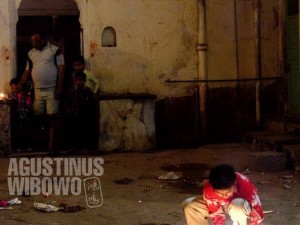#1Pic1Day: Festival Cahaya | The Festival of Lights (India, 2005)
The Festival of Lights (India, 2005) The most important festival among Indian Hindus is Diwali, also known as “Festival of Lights”. The celebration emphasizes victory of light over darkness, good over evil, hope over despair. Aside from the puja ritual for Goddess Lakhsmi, Diwali celebration is also signified by millions of lights shining roads, streets, and alleys. They also burn firecrackers for the whole night. Festival Cahaya (India, 2005) Perayaan terbesar di kalangan umat Hindu India adalah Diwali, dikenal juga sebagai “Festival Cahaya”. Hari raya ini menekankan kemenangan cahaya atas kegelapan, kebaikan atas kejahatan, harapan atas keputusasaan. Selain ibadah puja kepada Dewi Lakhsmi, perayaan Diwali ditandai dengan menyalakan jutaan lilin di berbagai sudut jalan, dan menyalakan petasan yang meledak-ledak sepanjang malam. [...]




